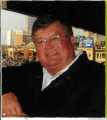G E T O N B O A R D

Dr. Ted Flickinger
IAPD President and Chief Executive Officer
|
Planning and Procedures are
Keys to Effective Board Meetings |
|
Board service is drudgery when it means sitting in long meetings that seem to accomplish nothing. On top of that, meetings of bored boards create an environment that can often foster surly, uncivil behavior.
To combat this problem, agency executives and board presidents can rely on proper agendas and proper procedures to give meetings focus and to keep them moving swiftly.
The Agenda
The executive and board president should work out an agenda for each meeting and be sure it is included in the board packet in plenty of time for all board members to review well before the meeting is called to order.
When board members see that a meeting is well planned (and when they have a history of well planned and well executed meetings behind them), they will be more comfortable because they will know what to expect, even if they expect that some contentious issues will be discussed. Board members who have the opportunity to prepare their thoughts and their remarks are more likely to engage in civil, constructive discourse.
Conversely, surprise agenda items, especially contentious items, invite curt and sometimes hurtful off-the-cuff remarks that destroy board morale and stifle progress. State law allows you to discuss new items placed on the agenda, but does not allow you to take action on them at that same meeting.
Sticking to the agenda
Once a member speaks to a subject, ask for a motion and then discuss the issue. A motion will force the board to stay focused.
When a new subject creeps up, make a note of it and move that it be tabled until a later meeting. Doing so provides the board with these three advantages:
1. It acknowledges the issue's importance.
2. It doesn't disrupt the current agenda.
3. It gives members time to prepare for discussion of the new item.
Handling a Controversial Issue on the Agenda
Hopefully, all board members are passionate about the agency, which means they likely have definite ideas about agency policy. Though the passion never wanes, sometimes members' policy ideas don't mesh, causing controversy. In these instances, building consensus on the board is vitally important in keeping the team's working attitude and board unity.
Here are some tips for arriving at a consensus:
• Start with a culture of civility. The board should have adopted a Code of Conduct or Ethics that sets the stage for civil, rational debate, free from personal attacks. A Code of Ethics also provides the framework so discussions regarding whether a particular action is ethical or unethical can go beyond an airing of individual opinions. (See IP&R, July / August 2005, page 6).
• The board president should establish a clear description of the problem and request each board member to speak to the issue within an established time period. Board members are less likely to hold grudges if they have had equal time to make their case and they feel their opinions were accepted respectfully. |
 |
Once a meeting is well planned, as evidenced by a good agenda, then it must be well executed. |
• Encourage diverse points of view. Not all conflict is bad. A healthy debate usually means that all sides of an issue are being discussed, leading to an informed (and, perhaps, a consensus) decision.
• Don't be negative. This doesn't mean that you should support a motion with which you don't agree, but it does mean that you should positively state your objection to the motion. Stay with the issues and not personalities, for example, rather than saying something like, "That's a dumb idea that just isn't going to work," try saying something like: "I don't agree with the motion because I think we would get better results if we ..." Frame objections in a way that neither demeans the intent of the motion (assuming the motion is well intended) nor the person making the motion. Rather, stick to the facts of the matter and avoid using inflammatory language. Remember, it's perfectly OK to disagree. But it is never OK to attack a fellow board member's personal beliefs, ideas or personality.
"When board members see that a meeting is well planned (and when they have a history of well planned and well executed meetings behind them), they will be more comfortable, even if they expect that some contentious issues will be discussed."
|
6 I l l i n o i s P a r k s & R e c r e a t i o n www.ILipra.org
- Create an environment that embraces the notion that conflicts do not have to have winners and losers. Debates should be viewed as win/win situations, exploring all the alternative resolutions to a problem.
- Keep the board focused on the mission statement. When a divided board is not making progress, it usually means both sides are not listening to one another. In these cases, return to the most basic point of agreement: the mission.
If a board president senses that healthy debate is turning toward unhealthy conflict, then he or she can try one or more of these strategies:
1. Table the issue for the next board meeting. But then call the issue at the very next board meeting. You must tackle divisiveness immediately, or else contentions continue to fester, eroding board unity and morale.
2. Have each board member submit in writing the potential solutions to the problem(s). Prioritize the solutions. Vote on the top ranking solutions.
3. Request that the executive or a committee do more research on the issue(s).
Principles of Parliamentary Procedure
Once a meeting is well planned, as evidenced by a good agenda, then it must be well executed. Board members, especially the board president, should be familiar with Robert's Rules of Order and proper parliamentary procedures, not because adhering to parliamentary procedure is good form, but because adhering to parliamentary procedure practically ensures effective board meetings.
Parliamentary procedures are designed to keep discussions focused so you can make decisions quickly and effectively. Underlying the rules of how to make motions and tally votes properly are the following basic principles:
• Parliamentary procedure makes it easier for people to work together effectively and helps groups accomplish their goals. Rules of order should assist a meeting, not inhibit it.
• A meeting can deal with only one matter at a time. Different motions are assigned in order of precedence.
• All members have equal rights, privileges and obligations. The board president must use his or her authority to ensure that all people attending the meeting are treated equally. A vocal minority should not be allowed to dominate debate.
• A majority vote decides an issue. Each member agrees to be governed by the vote of the majority.
• The rights of the minority must be protected. Although the majority ultimately rules, all members have a right to be heard and state their views.
• Every motion should be discussed. The right of members to speak on any issue is as important as the right to vote.
• Members have a right to understand the meaning of any question raised and know the potential effect of a decision.
|
|
IAPO Calendar
June 24
Summer Golf Tour Event #2
Stony Creek Golf Course
Oak Lawn Park District
July 9
IAPD Parliamentary Procedure/Robert's RulesWorkshop
Pioneer Park Community Center
Arlington Heights Park District's
July 24
Legislative Golf Outing
White Pines Golf Club
Bensenville Park District
August 12
Summer Golf Tour Event #3
Steeple Chase Golf Club
Mundelein Park and Recreation District
August 16
Park District Conservation Day
State Fairgrounds, Springfield |
September 8
Summer Golf Tour Event #4
Sycamore Golf Club
Sycamore Park District
September 12
IAPD Awards Gala
Traditions at Chevy Chase Country Club
Wheeling Park District
October 14-18
NRPA Congress
Baltimore, Maryland
November 6
Legal Symposium
Hamburger University
Oak Brook
January 29-31, 2009
IAPD/IPRA Soaring to New Heights Conference
Hilton, Chicago |
|
Dont Miss the
IAPD PARLIAMENTARY
PROCEDURE/ROBERT'S RULES
WORKSHOP
Wednesday, July 9:
Arlington Heights Park District's
Pioneer Park Community Center
Activity Rooms: B & C
500 S. Fernandez Ave.
Arlington Heights, IL 60004 (847) 577-3035
6:30 p.m. Registration/Refreshments
7:00 p.m. - 9:30 p.m. Workshop |
This workshop will cover the aspects of parliamentary procedure and Robert's Rules of Order that will help you keep your meetings effective and efficient. Subjects include the processing of a motion, precedence of a motion, the meaning of various votes and special rules for a small board. Nancy Sylvester will be the presenter. A practicing professional parliamentarian since 1980, she is a Professional Registered Parliamentarian, a Certified Professional Parliamentarian and a Certified Teacher of Parliamentary Procedure, making her one of only approximately 35 people in the country with her level ol designation. She is the author of two books on the subject. including The Complete Idiot's Guide to Robert's Rules. Don't miss out on this affordable way to improve the work of your board. One registration from an IAPD-member agency is just $75. Two registrations from an IAPD-member agency cost $65 each, and three or more registrations from an IAPD-member agency cost $55 each.
Register on-line at www.ILparks.org |
www.ILparks.org M a y / J u n e 2008 7
Illinois Periodicals Online (IPO) is a digital imaging project at the
Northern Illinois University Libraries funded by the Illinois State Library
|
|

